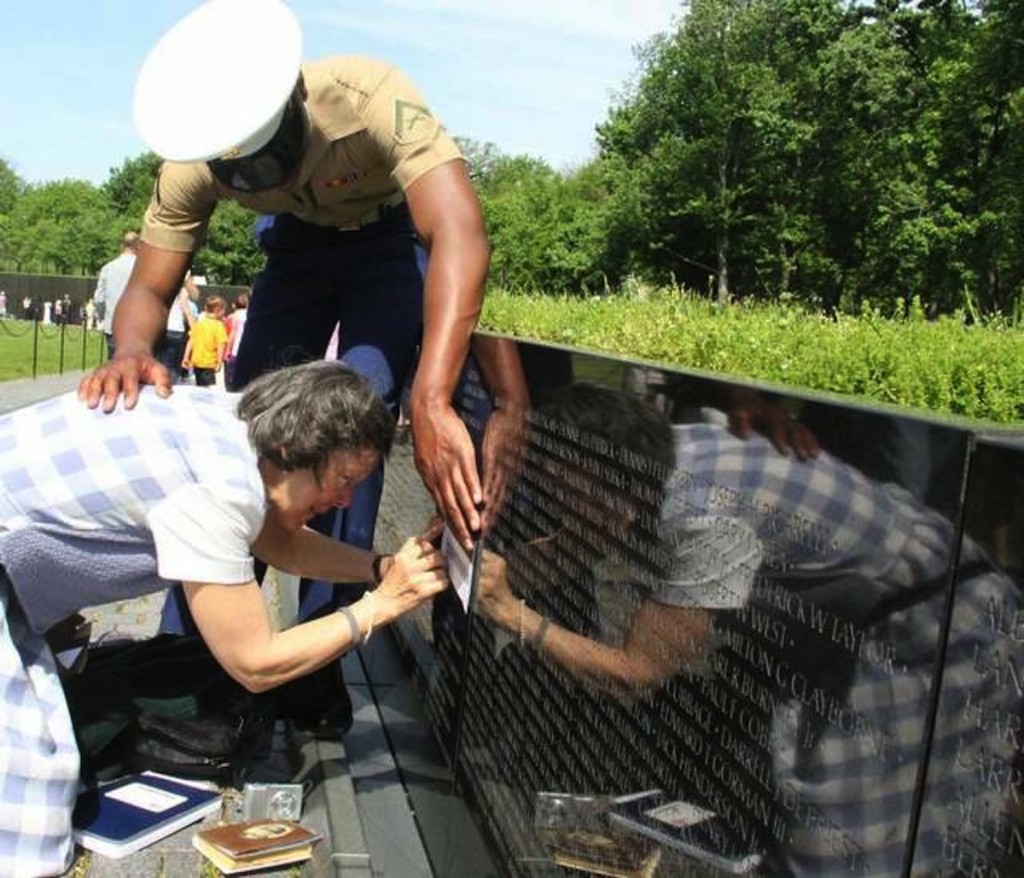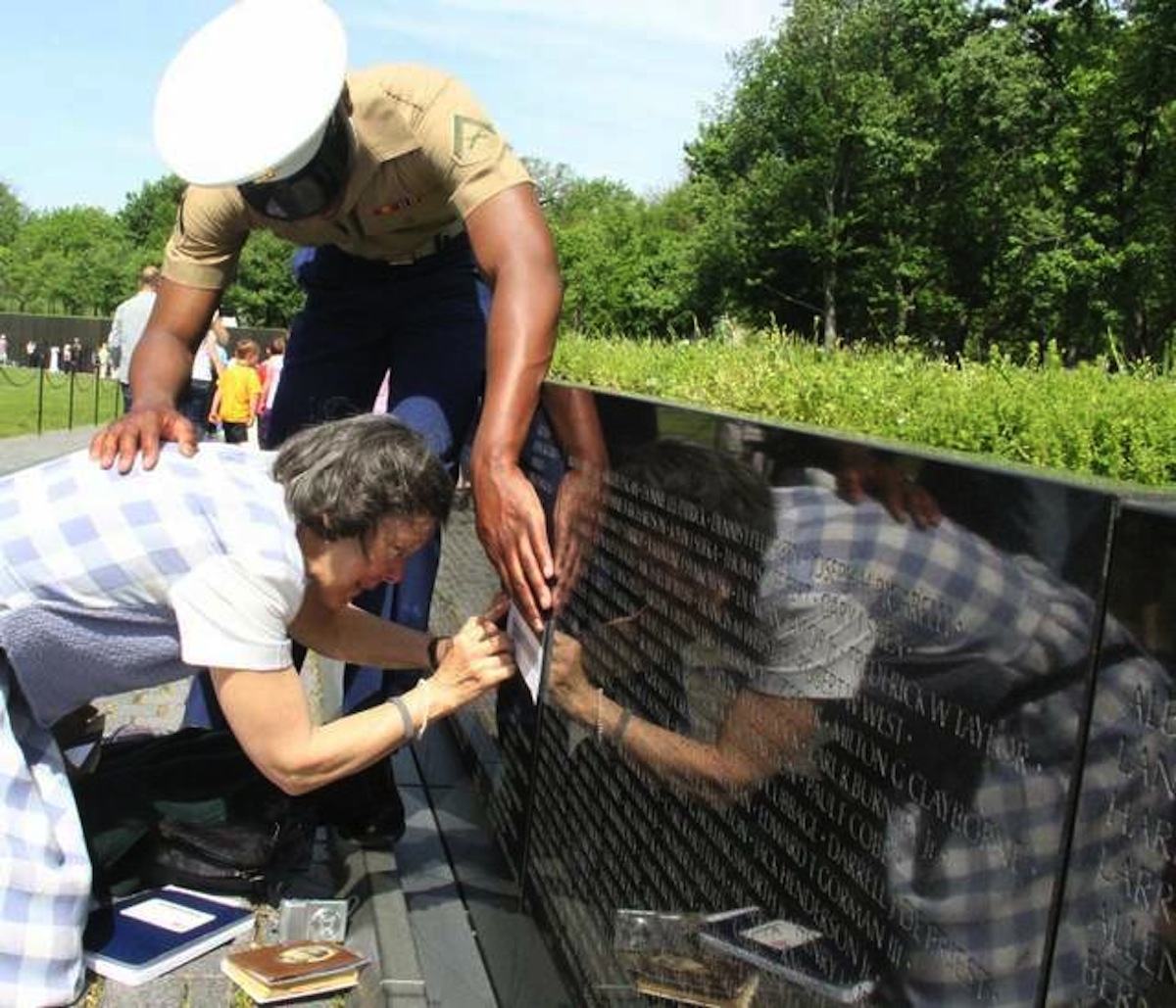WASHINGTON – Eric Stone and L.S. Elisabeth Swiriduk have never met, but they have something in common.
The names of Swiriduk’s father and Stone’s uncle are now among 58,300 names etched in the black granite walls of the Vietnam Veterans Memorial.
Stone and Swiriduk, along with the families of 12 other service members, gathered at the wall early on the morning of May 11 to honor the addition of their loved ones’ names, an event that for most was a longtime coming.
When the wall was unveiled in 1982, the names of 58,195 service members killed or still missing in action in the Vietnam War were inscribed on it.
Since then, more than 300 names, including the most recent 14, have been added.
Swiriduk was just 11 years old when her father, 36-year-old Walter Huge Mauldin, passed away from pancreatic cancer caused by exposure to Agent Orange.
She felt he would probably be surprised by the attention he was getting now.
“He had such a humble heart,” Swiriduk said. “He didn’t want anyone to notice and make a big fuss over him.”

A Marine comforts L.S. Elisabeth Swiriduk as she traces the name of her father, Walter H. Mauldin, on the Vietnam Veterans Memorial. A May 11 ceremony honored the addition of the names of Mauldin and 13 other service members to the memorial. Mauldin died 46 years ago from cancer related to exposure to the herbicide Agent Orange. (Tammy Thueringer / Medill News Service)
Alan L. Seamans, Stone’s uncle, died in 1998, the result of a severe gunshot wound suffered while serving in Vietnam nearly 30 years earlier.
Stone said while the injury eventually led doctors to remove the lower half of his uncle’s body, it didn’t stop Seamans from enjoying life.
“He loved fishing, hunting and riding a snowmobile,” Stone said. “And he never complained about his situation.”
Stone also said that like most combat veterans, his uncle rarely talked about his war experiences.
“They don’t talk about it and I think that’s probably what makes them so special,” Stone said. “They don’t want any of this, they don’t feel like they need any of this. They just felt a duty to serve the country.”
The fact that Seamans and Mauldin died of service-related causes made their names eligible for addition to the wall.
According to the Vietnam Veterans Memorial Fund, the Defense Department makes the difficult and often technical decision of whose names go on the wall.
DoD reviews individual requests for names to be added to memorial and can, on its own, add names omitted in error.
All 14 of the newly added service members sustained wounds within the combat zone that eventually contributing to their deaths, meeting DoD’s criteria.
The May 11 ceremony also featured changes to some existing names.
A cross next to a name represents a service member listed as missing in action, while a diamond symbol denotes confirmed death. When a service member’s remains are returned or accounted for, a diamond is superimposed over the cross. That was the case for eight names in the recent ceremony.
“It is a small, almost unnoticeable mark that means so much,” said Mike Harris, former American Legion national vice commander, who spoke at the event. “In doing so, we recognize the search is over for these eight, they are no longer missing in action. Their fates are now known.”
Regardless of names, status or war, Stone said he’s just grateful to see memorials for so many veterans.
“I’m glad that the country has memorialized these people who had a sense of duty,” Stone said. “We need to think about them every day.”


